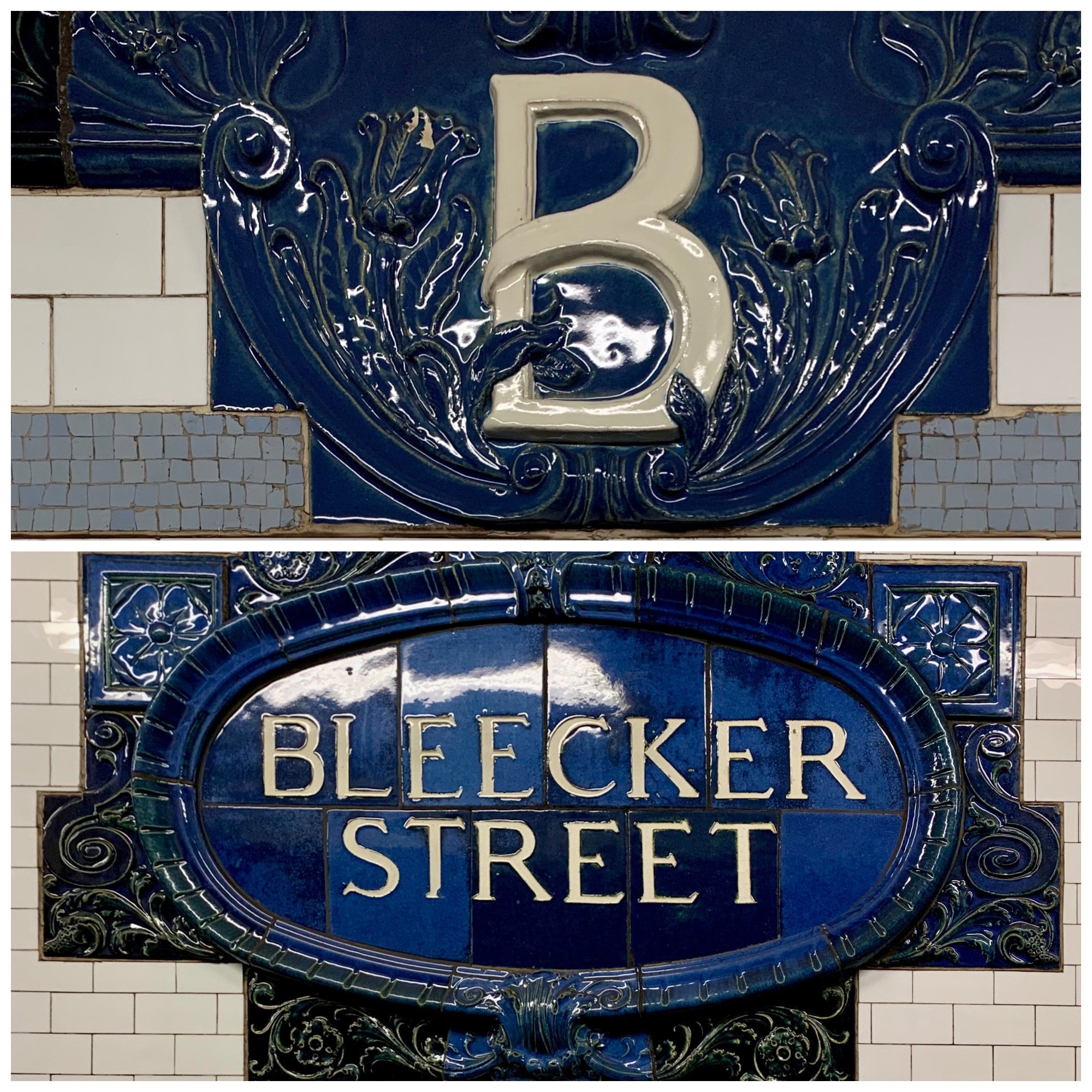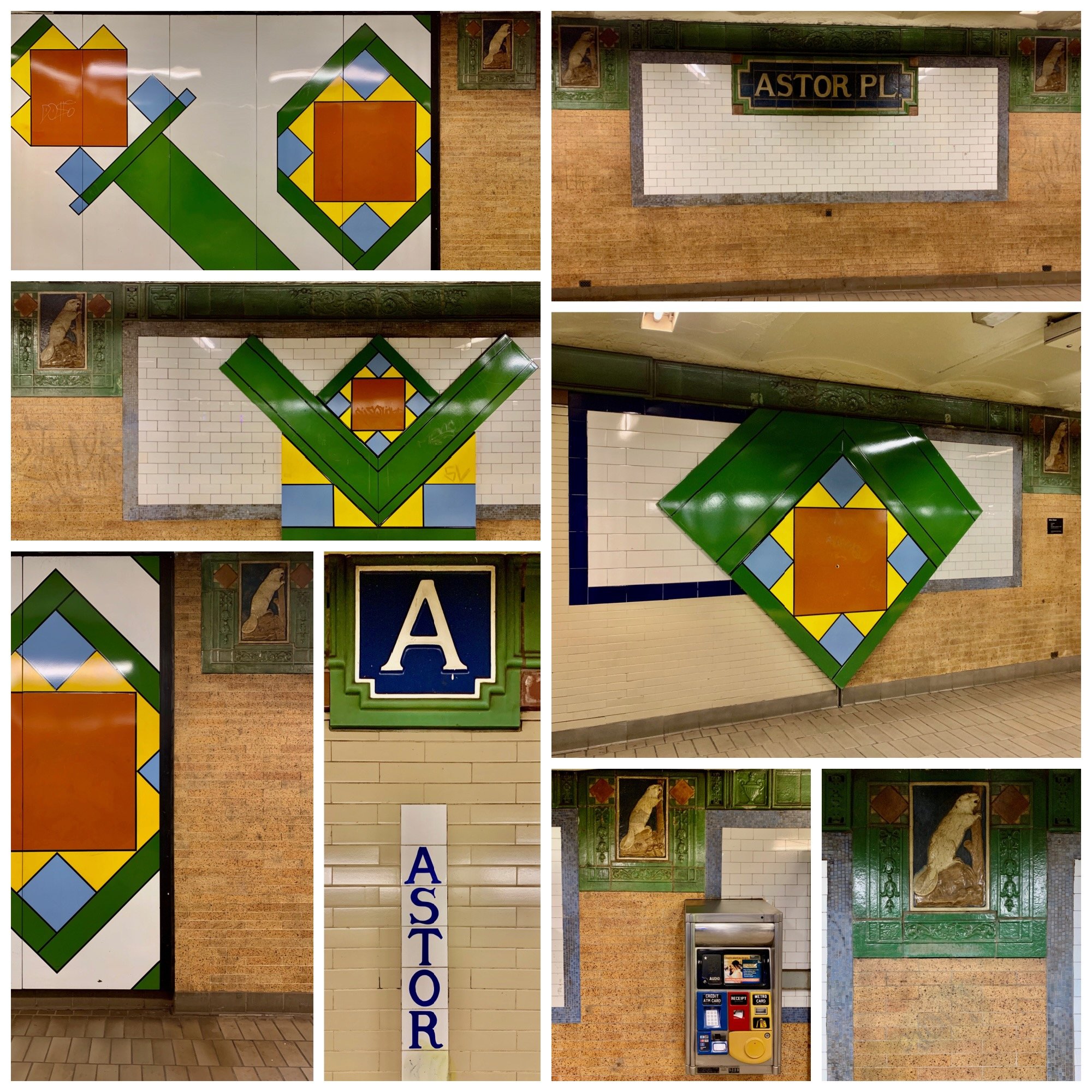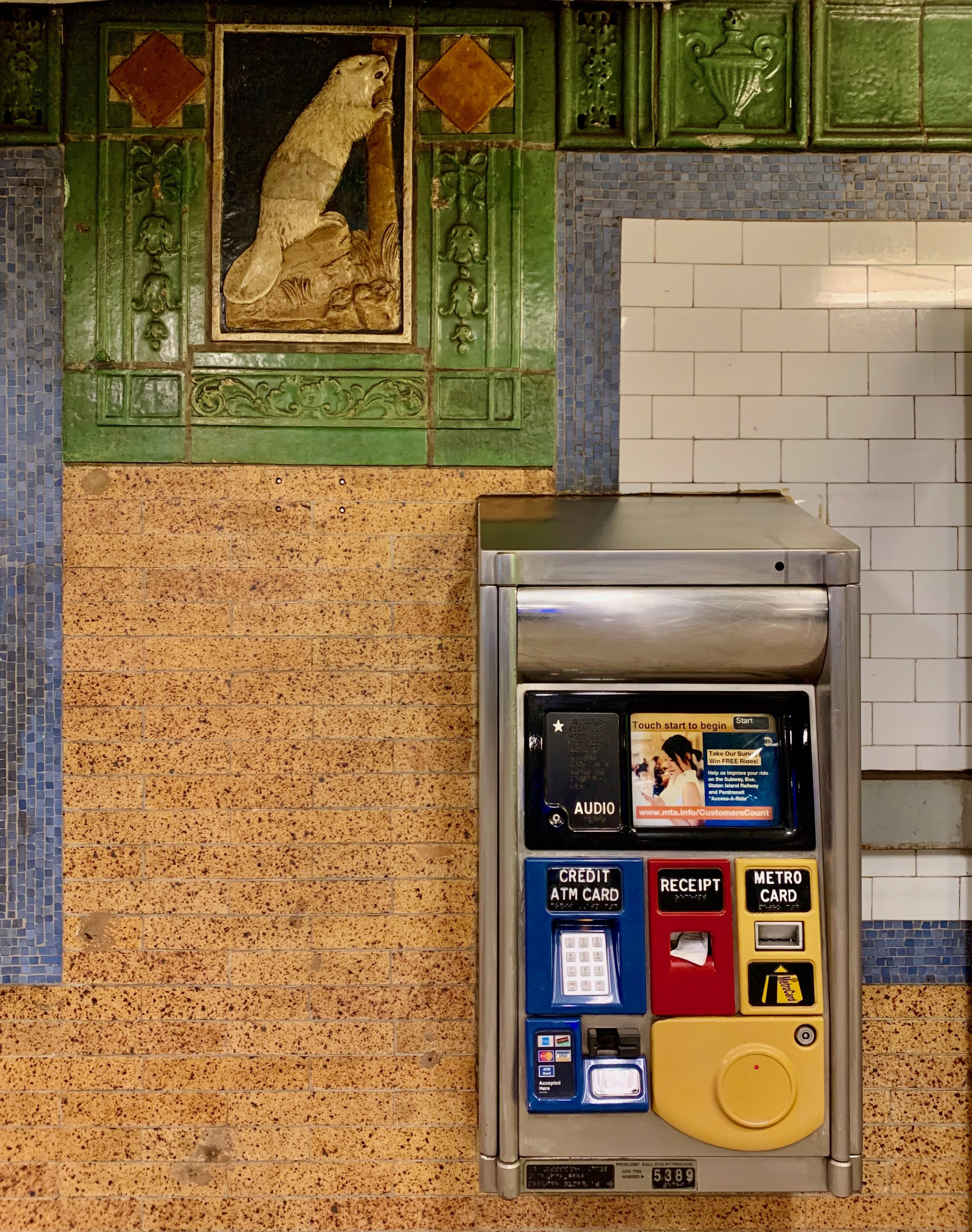The Bleecker Street ceramic medallion, helping straphangers find the stop for nearly 120 years.
Still on the ORIGINAL 28, these Interborough Rapid Transit (IRT) stops showcase Heins & LaFarge at their prime
George L. Heins and Christopher Grant LaFarge — the original architects of New York’s subway system — met as students at the Massachusetts Institute of Technology around 1880 and then worked in the architectural office of Cass Gilbert. In 1886, they set up their own New York practice. In the spring of 1900, Heins & LaFarge, after finishing some impressive commissions, met the financier August Belmont, the head of the consortium that was building New York's first underground mass transit system. In March 1901, Belmont helped get them appointed as architects for the first subway line, to run from City Hall to Grand Central, across to Times Square, and up Broadway to West 145th Street.
Bleecker Street: For the station at Bleecker and Lafayette Streets, Heins & LaFarge, designed two styles of station identifiers made by the Grueby Faience Company in 1904. The large broad oval medallion, glazed faience “Bleecker Street” plaques in cobalt blue with white letters depicting poppies were assembled from 27 pieces of faience ceramic. The smaller blue “B” cartouches show tulips, serving as a reminder of the Dutch origins of the city. Later Squire Vickers’ installed five different colored mosaics, which were sadly removed in the station’s 2012 renovation.
A collage of all the elements of the Astor Place station.
Astor Place: The next stop, Astor Place, is an homage to John Jacob Astor. Astor made his millions in the 19th-century fur trade, reflected in the beaver Grueby Faiences designed by Heins & LaFarge, which laid at the underground stop near his home in New York’s Greenwich Village. Ironically, Astor quite possibly never saw them, as the wealthy in the Gilded Age usually traveled by carriage. In 1986, graphic designer Milton Glaser, of I ♥ New York fame, created Untitled, which he described as “a variation on the existing forms. By extracting fragments of the motifs on the tile panels, enlarging their scale, and placing these pieces in a random pattern, they take on the appearance of a puzzle.”
A detail of the Grueby Faience offset by a modern Metro card machine, which will soon be made obsolete by the subway’s OMNI card system.
One of the panels designed by Milton Glaser to riff off the original terra-cotta emblems of Heins & LaFarge. Notice the various squares in the top right and left corners framing the beaver.
Another Glaser panel. Glaser, who died in 2020 at age 91, would sometimes venture into Astor Street to see how the ceramic panel was holding up. Easily scratched and defaced, the MTA Arts & Design program, which funds the transit art, rarely uses the medium, insisting on mosaic.




